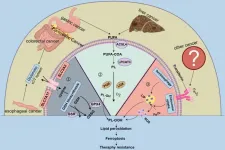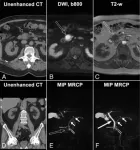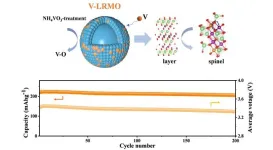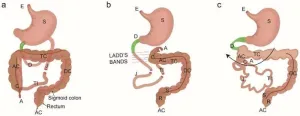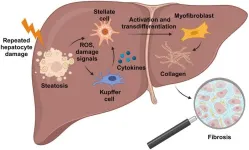(Press-News.org) Scarlet macaws are a symbol of fidelity and virtue to many people because they are thought to mate for life — but it turns out that they also “play favorites” when feeding their young, making them excellent mates, but neglectful parents.
Fortunately, Texas A&M scientists have developed a way to ensure the birds’ bad parenting results in fewer chick deaths.
Researchers at the College of Veterinary Medicine and Biomedical Sciences have discovered that scarlet macaws purposefully neglect feeding the youngest chicks in most broods, even when resources are plentiful. This results in only one or two chicks being able to fledge — the process in which parents teach their young to fly and survive on their own — even though broods may contain up to four chicks.
“Scientists have known for years that scarlet macaws hatch more chicks than they fledge,” said Dr. Donald Brightsmith, a professor in the VMBS’ Department of Veterinary Pathobiology. “We found that 26% of second chicks in scarlet macaw broods and nearly all third and fourth chicks die before fledging.
“We tested several theories as to why these younger chicks don’t survive, and we found that it’s not sibling rivalry or a lack of food. The parents just stop feeding certain chicks, so they starve to death,” he said.
The deciding factor appears to be the difference in chick ages.
“Scarlet macaws lay eggs over a period of several days instead of all at once, which means the chicks don’t hatch on the same day,” said Dr. Gabriela Vigo-Trauco, a post-doctoral researcher with the Schubot Center for Avian Health, who led the project. “If the second chick hatches only a couple of days after the first, there is a good chance that the parents will feed it. However, if it hatches four, five, or more days after the first chick, the parents will probably neglect it and let it die.”
The researchers, who recently published their study in the journal Diversity, suspect that when chicks are young and hatch four or more days apart, they begin to need different types of parental care. For example, some chicks need feeding while others are still incubating, which contributes to the high rates of neglect and starvation.
Armed with this knowledge, the team has developed a method to save neglected chicks by giving them macaw “foster parents.”
“Thankfully, scarlet macaws are not endangered or threatened, but there are many parrot species that are,” Brightsmith said. “We hope that this foster program will be used to help save the populations of endangered parrot species.”
Understanding Brood Reduction
Brood reduction, or eliminating chicks after they hatch, is a common practice among birds.
“Some species of seabirds, like boobies, gulls, and pelicans, have a high degree of sibling rivalry that can lead to death,” Vigo-Trauco said. “Eagles, falcons and other species are known to attack and kill their own chicks. Often, parents target the smaller chicks, which are usually younger.”
For scarlet macaws, starvation is the cause of 45% of all chick deaths; chicks that hatch third or fourth in a brood always die.
“We wanted to understand what was causing 26% of second chicks to die of starvation,” Brightsmith said. “Scientists often point the finger at a lack of resources in the environment, but if it’s about conserving resources, then why do scarlet macaws lay so many eggs?”
To rule out lack of resources, Gustavo Martinez, a member of the research team, marked and monitored trees to estimate the amount of fruit — scarlet macaws’ main source of food — in the forests of the Tambopata National Reserve in Peru where the study was conducted.
“Once a month for several years, he would go out and check about 1,300 trees for fruit and flowers,” Brightsmith said. “Looking at the data, we can tell that there were times when food scarcity forced macaws to forgo breeding for a season, but we couldn’t find any association with chick starvation.”
Catching Macaws In The Act
To see what was happening in scarlet macaw nests, the researchers installed cameras in nest boxes at the Tambopata National Reserve in Peru. For 10 years, they captured video segments showing what was happening to the chicks.
They also accessed the nests and manually checked which chicks had received food, which was how they determined that some chicks were intentionally being starved.
“Scarlet macaws have a food sac on their necks called a crop, and in chicks it’s very easy to see when it’s full of food,” Brightsmith said. “We caught video of female macaws trying to over-feed their oldest chicks while the third chick would be running slowly around the base of the nest with an empty crop, begging for food.
“What’s more, the chicks at that age can’t regulate their own body temperature, so they need to be in the nest. We saw that the mother won’t even share her body heat with her dying offspring,” he said. “As scientists, we try not to do what’s called anthropomorphizing — attaching human ideas about morality to animals. But it’s hard to watch that and not think of it as parental abuse.”
The “abusive behavior” goes even further — but it seems that macaw parents aren’t always on the same page.
“Sometimes the female macaw will start to bury a chick that she’s decided not to feed by kicking nest substrate on top of it,” Brightsmith said. “But then the father will come home and unbury the chick and feed it. So, they’re not always in agreement, which makes the whole process even more complex.”
Saving Neglected Chicks
While scarlet macaws have some questionable parenting techniques for their own hatchlings, the good news is they also make excellent foster families for neglected chicks.
As part of her doctoral research, Vigo-Trauco developed a program for saving neglected chicks. The chicks are raised in captivity for a few weeks before being placed in the nests of macaws with chicks at a similar developmental stage or that have lost all their chicks to predation.
The program effectively eliminates the need for different types of parental care and allows the foster parents to raise chicks that would have starved.
“The key to success is making sure that the chicks all look about the same size,” she said. “This encourages the new parents to take care of the foster chick as if it were their own.”
While the macaws seem to notice that something is different, that doesn’t stop them from adopting the foster chick.
“We see them on camera as they land on the nest box, look in, and then look around like they’re thinking, ‘Did I walk into the wrong house?’ It’s kind of hilarious,” Brightsmith said. “They turn their heads sideways to get a good look at the new chick, think about it for a moment, and then start to feed them.”
The foster chick program, published in Diversity in 2021, successfully re-homed 28 chicks over the course of three breeding seasons.
“Parrots are one of the most endangered groups of birds in the world,” Brightsmith said. “We hope that this program, and the understanding of brood reduction behind it, can assist with the conservation of a broad array of parrot species across the tropics.”
By Courtney Price, College of Veterinary Medicine and Biomedical Sciences
END
Scarlet Macaw parents ‘play favorites,’ purposefully neglect younger chicks
Researchers at Texas A&M University have come to the rescue with a “foster program” for neglected chicks.
2024-11-08
ELSE PRESS RELEASES FROM THIS DATE:
One gene provides diagnoses for 30 patients whose condition was unexplained for years
2024-11-08
An international team of researchers has provided a genetic diagnosis for 30 individuals whose condition was undiagnosed for years despite extensive clinical or genetic testing. The study, conducted by researchers at Baylor College of Medicine, National University of Singapore and collaborating institutions worldwide, appeared in Genetics in Medicine, the official journal of the American College of Medical Genetics and Genomics.
“The story of our findings began with one patient I saw in the clinic presenting an uncommon combination of problems,” said first and co-corresponding ...
Current practice and emerging endoscopic technology in the diagnosis of colorectal cancer
2024-11-08
The evolution of gastrointestinal (GI) endoscopy has transformed CRC diagnostics since its early 20th-century origins. Initial rigid endoscopes provided limited visualization, were highly uncomfortable for patients, and only partially visualized the colon. With the introduction of fiber-optic technology in the 1950s, endoscopy began transmitting real-time images, greatly enhancing diagnostic applications for GI conditions. Today, CRC remains a primary target for endoscopic screening due to its high prevalence as the second leading cause of cancer ...
Decoding 17-beta-hydroxysteroid dehydrogenase 13: A multifaceted perspective on its role in hepatic steatosis and associated disorders
2024-11-08
Chronic liver disease (CLD) is a growing global health challenge, accounting for millions of deaths each year. Its major contributors include metabolic dysfunction-associated steatohepatitis (MASH), alcoholic liver disease (ALD), and hepatitis C virus infection. These conditions are closely tied to hepatic steatosis, a condition characterized by the abnormal accumulation of fat in the liver. Recent genome-wide association studies have identified the 17-beta-hydroxysteroid dehydrogenase 13 (HSD17B13) gene and its loss-of-function variant ...
Key pathway leading to neurodegeneration in early stages of ALS identified
2024-11-08
Approximately 5,000 people in the U.S. develop amyotrophic lateral sclerosis (ALS) each year. On average, they survive for only two to five years after being diagnosed, according to the Centers for Disease Control and Prevention. The rapidly progressing neurodegenerative disease causes the death of neurons in the brain and spinal cord, resulting in muscle weakness, respiratory failure and dementia. Despite the devastating nature of the disease, little is known about what first triggers the deterioration of motor neurons at the onset of ALS.
Now, researchers from University of California San Diego and their colleagues ...
Ferroptosis in regulating treatment tolerance of digestive system tumors
2024-11-08
The global burden of digestive tract tumors is profound, with these cancers accounting for nearly half of all malignant tumors worldwide. Despite advancements in endoscopic diagnostic methods, which enable earlier detection and treatment, a large portion of patients still receive diagnoses at later stages. For these patients, chemotherapy, radiation, and immunotherapies are often the only viable options, yet resistance to treatment remains common, leading to high recurrence and mortality rates. Research increasingly shows that ferroptosis may be a key mechanism to reverse treatment tolerance. Ferroptosis, characterized by ...
A promising future in pancreatic incidentaloma detection
2024-11-08
In recent research published in eGastroenterology, Dr. J-Matthias Löhr and colleagues provide an in-depth review of diagnostic methods for pancreatic incidentaloma—incidental findings often detected during imaging scans intended for other conditions. These pancreatic lesions, which vary in severity, can occasionally signal pancreatic cancer in its earliest stages. However, traditional methods, including MRI and CT scans, are limited by invasiveness, cost, and variable sensitivity to early pancreatic changes.
The research highlights ...
Stabilizing lithium-ion batteries: The vanadium touch
2024-11-08
As demand surges for electric vehicles and energy storage systems, lithium-ion batteries need to deliver higher energy densities at lower costs. While conventional cathode materials like LiFePO4 and Li-Ni-Co-Mn-O are widely used, they often fail to balance performance with affordability. Lithium-rich manganese oxides (LRMOs) have emerged as a potential alternative due to their high capacity and cobalt-free composition. However, their low initial Coulombic efficiency and rapid voltage decay have limited their broader application. Addressing these challenges requires deeper research to stabilize LRMOs for widespread commercial use.
In September, 2024, a team from Guangdong University of Technology, ...
Innovative approaches to the surgical challenges in the management of gastroschisis
2024-11-08
Gastroschisis, a congenital abdominal wall defect, has transformed from a uniformly fatal condition to one with a 95% survival rate through surgical advancements over the past six decades. The primary goal of managing gastroschisis is to mitigate fetal and postnatal risks, including damage from herniated bowel loops and ensuring effective decompression of the gastrointestinal tract during recovery. This review focuses on both preventative and corrective aspects of gastroschisis management, highlighting innovations in neonatal surgery that improve quality of life and long-term health outcomes.
Definition ...
Mouse models for the study of liver fibrosis regression in vivo and ex vivo
2024-11-08
Liver fibrosis is a progressive and potentially reversible condition that results from chronic liver damage, which can be caused by a variety of factors, including metabolic dysfunction-associated steatotic liver disease (MASLD), alcohol abuse, and viral hepatitis. MASLD affects a significant portion of the global population and can progress to metabolic dysfunction-associated steatohepatitis (MASH), leading to liver cirrhosis if left untreated. Given the prevalence of MASLD and its related conditions, the study of fibrosis and its regression ...
At Fortune Global Forum 2024, Alex Zhavoronkov PhD, Founder and CEO of Insilico Medicine, discusses AI business potential
2024-11-08
From November 11 to 12, the Fortune Global Forum 2024, an invite-only premier event of Fortune, is set to gathers the leaders of the world’s biggest multinational companies on the dynamic frontiers of global business in New York, where business leaders from around the globe come together to create a modern roadmap for success.
Insilico Medicine(“Insilico”), a global leading generative artificial intelligence (AI)-driven biotechnology company, announces that Alex Zhavoronkov PhD, founder and CEO of Insilico Medicine will be attending the Fortune ...
LAST 30 PRESS RELEASES:
The perfect plastic? Plant-based, fully saltwater degradable, zero microplastics
Bias in data may be blocking AI’s potential to combat antibiotic resistance
Article-level metrics would provide more recognition to most researchers than journal-level metrics
Satiety’s little helper: Protein that supports appetite regulating protein identified
UF dives deep into predicting storm damage with computer models
A stormy ocean voyage yields insights on the global carbon cycle
Scientists identify first non-coding gene that controls cell size
Demonstration of altermagnetism in RuO₂ thin films -- A new magnetic material for the AI era
Penn researchers awarded $25M to conduct trial using smartphones to fight heart disease
PCORI awards funding for new patient-centered healthcare research
Exploring the origins of the universe: 145 low-noise amplifiers complete ALMA telescopes
Empress cicada wings help illuminate molecular structure
Using sound waves to detect helium
Time burden in patients with metastatic breast and ovarian cancer from clinic and home demands
Researchers discover bias in AI models that analyze pathology samples
Scientists ID potential way to prevent brain injuries from triggering Alzheimer's
MASTER 2nd Open Call: Execution period kick-off
Algae for health in food and pharma
Advanced microrobots driven by acoustic and magnetic fields for biomedical applications
Chicago health information leader recognized for raising CPR readiness and blood pressure awareness
The Intimate Animal, a new book from Kinsey Institute Executive Director Dr. Justin Garcia
When blue-collar workers lose union protection, they try self-employment
New video dataset to advance AI for health care
MEA-based graph deviation network for early autism syndrome signatures in human forebrain organoids
New modeling approach sheds light on rare gut disease
Study documents potentially hazardous flame retardants in firefighter gear
Can certain bacteria regulate aging of the immune system and its related alterations?
AI model helps diagnose often undetected heart disease from simple EKG
There are fewer online trolls than people think
Cell membrane fluctuations produce electricity
[Press-News.org] Scarlet Macaw parents ‘play favorites,’ purposefully neglect younger chicksResearchers at Texas A&M University have come to the rescue with a “foster program” for neglected chicks.


